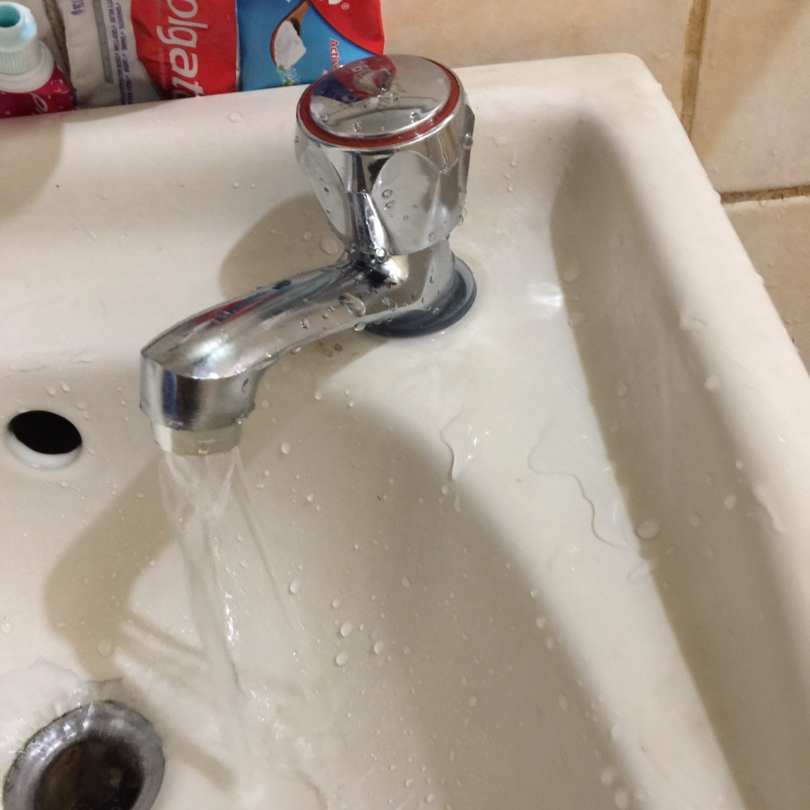Why It's Significant to Resolve a Leaking Faucet
Why It's Significant to Resolve a Leaking Faucet
Blog Article
Here below you might get some good additional info on the subject of Why It's Important to Fix Leaky Faucets.

Leaking faucets may seem like a minor hassle, however their influence surpasses simply the aggravation of the sound. From wasting water to incurring unnecessary financial prices and health risks, disregarding a trickling tap can lead to numerous consequences. In this write-up, we'll look into why it's crucial to resolve this common house issue promptly and successfully.
Waste of Water
Ecological Influence
Leaking faucets add dramatically to water waste. According to the Environmental Protection Agency (EPA), a solitary faucet dripping at one drip per secondly can squander greater than 3,000 gallons of water per year. This not only stress water sources however additionally affects ecosystems and wildlife based on them.
Step-by-Step Overview to Dealing With a Dripping Faucet
Tools Required
Before trying to fix a leaking faucet, gather the required tools, including an adjustable wrench, screwdrivers, substitute components (such as washing machines or cartridges), and plumber's tape.
Usual Tap Issues and Their Solutions
Determine the kind of tap and the particular problem triggering the drip. Typical issues include worn-out washing machines, rusty valve seats, or malfunctioning O-rings. Refer to manufacturer guidelines or on-line tutorials for step-by-step guidance on fixings.
Financial Expenses
Increased Water Costs
Beyond the ecological influence, dripping taps can inflate water expenses substantially. The collected waste over time equates right into higher energy expenses, which might have been stayed clear of with timely fixings.
Potential Residential Property Damage
Additionally, extended trickling can bring about harm to fixtures and surface areas bordering the faucet. Water accumulation can cause discoloration, rust, and even structural concerns if left neglected, causing added repair service expenses.
Health and wellness Issues
Mold and Mildew Development
The continuous existence of moisture from a dripping tap develops an excellent atmosphere for mold and mold growth. These fungis not only compromise interior air quality yet likewise posture health and wellness dangers, specifically for individuals with breathing conditions or allergic reactions.
Waterborne Illness
Stagnant water in trickling faucets can end up being a breeding place for bacteria and other microorganisms, boosting the threat of waterborne diseases. Impurities such as Legionella bacteria thrive in stagnant water, potentially resulting in severe health problems when consumed or breathed in.
Do it yourself vs. Expert Repair service
Pros and Cons of Do It Yourself Repair Service
While some may attempt to fix a trickling tap themselves, DIY repairs feature their own set of obstacles. Without appropriate expertise and tools, do it yourself efforts can exacerbate the concern or result in insufficient repairs, extending the trouble.
Benefits of Employing an Expert Plumber
Working with a specialist plumber ensures that the underlying reason for the leaking tap is resolved properly. Plumbings possess the know-how and tools to identify and repair faucet issues successfully, conserving time and reducing the risk of further damages.
Ecological Responsibility
Individual Payment to Conservation
Taking responsibility for dealing with leaking faucets straightens with broader initiatives toward water preservation and environmental sustainability. Every person's actions jointly make a significant influence on preserving valuable sources.
Sustainable Living Practices
By focusing on timely repairs and embracing water-saving behaviors, individuals contribute to sustainable living techniques that benefit both existing and future generations.
Safety nets
Normal Maintenance Tips
To avoid leaking faucets, carry out regular upkeep such as cleansing aerators, inspecting for leaks, and changing damaged components without delay. Additionally, consider installing water-saving devices or upgrading to more reliable components.
Significance of Prompt Repair Works
Dealing with trickling taps as soon as they're noticed protects against additional water waste and potential damages, ultimately conserving both water and money in the future.
Impact on Home Worth
Understanding of Well-Maintained Property
Preserving a home in good condition, consisting of addressing maintenance issues like leaking taps, boosts its regarded value and desirability among prospective purchasers or occupants.
Impact on Resale Worth
Properties with well-maintained plumbing components, consisting of faucets, command higher resale values in the real estate market. Addressing trickling taps can contribute to a positive impression throughout building assessments and settlements.
Verdict
Attending to a dripping tap goes beyond plain benefit; it's an important action toward saving water, reducing economic costs, and securing health and residential property. Whether with do it yourself repair work or expert assistance, taking action to repair leaking taps is a small yet impactful method to advertise responsible stewardship of resources and contribute to a much healthier, extra lasting future.
How to Fix a Dripping or Leaky Faucet
A leaking faucet is one of the most common problems that homeowners encounter, but it being commonplace doesn’t make it any less annoying. The constant drip drip drip of a leaking bathtub faucet, showerhead, or sink tap can disturb your home’s serenity. Left neglected, a dripping faucet can also result in higher water bills and discoloration or mold growth in your sink or plumbing fixtures.
Fortunately, you don’t have to be a trained plumber to know how to stop a dripping faucet. With some basic tools, replacement parts, and a little patience, leaky faucet repair is a breeze. In this article, we’ll explain what causes dripping faucets and how you can fix them.
What Causes a Leaking Faucet?
Kitchen and bathroom faucets come in all manner of designs, but most involve some combination of valves, O-rings, seals, and washers. The O-ring is usually the weakest link, but any one of these pieces can wear down over time. Heat, moisture, temperature fluctuations, minerals, mold, and movement can contribute to warping and corrosion, breaking the watertight seal. This just comes with the territory of being a homeowner. Everything is always subject to wear and tear, and some component parts of your appliances and fixtures need to be replaced on occasion. At least replacement O-rings are cheap!
More rarely, dripping faucets can be a symptom of excessively high water pressure. Were this the case in your home, you would probably notice that the leak is not isolated to one faucet. Water pressure issues are harder to resolve on your own. We recommend contacting a professional plumber if you suspect your water pressure is too high.
How to Fix a Dripping Faucet
Pipe wrench or monkey wrench Allen wrench set Screwdrivers Old towel or rag Shut off the water.
Before you do anything, you need to turn off the water to keep from drenching your kitchen or bathroom. You should find a valve under the sink and against the wall. Once you’ve turned this valve, try turning the faucet on to confirm that the water source has been cut off.
If you can’t locate your local valve for the faucet you’re working on, you can always shut off the water to the house at the main valve. Of course, this will prohibit anyone from using the sinks, showers, or toilets while you’re working on the faucet that’s giving you trouble.
Plug or block the drain.
You’ll be disassembling the faucet and removing some small bits of hardware. Plug the drain with a stopper or rag to avoid the possibility of a small screw falling into your P-trap.
Take apart the faucet assembly.
There are several varieties of kitchen and bathroom faucets, each with its own manner of assembly. For detailed instructions on how to disassemble your faucet, you can refer to the fixture’s manual or contact the manufacturer. If you know whether you have a ball, disc, cartridge, or compression faucet, you can find detailed schematics online.
In general, you need to begin by removing the faucet handles. You might notice a small screw that you’ll need to remove with a screwdriver or Allen wrench. If you don’t see any visible securing hardware, it’s likely hidden under a decorative cap that can be unscrewed or popped off with flathead screwdriver.
Remove each piece methodically, consulting a schematic when necessary. Take notes or arrange the pieces in such a way to make it easier to correctly reassemble the faucet later.
Remove the cartridge.
Once you’ve removed the handles and securing hardware, you should be able to remove the valve cartridge or stem. Some cartridges will slide right out. Other faucet models will require you to loosen a nut with a pipe wrench before you can remove the valve stem.
Examine the exposed hardware.
With the cartridge or stem removed, inspect the component parts. Check the rubber O-rings for wear and tear. Also examine the seat washer for corrosion or other damage. These pieces are usually the responsible parties for a dripping faucet, but it’s worth inspecting the other component parts while you have the faucet disassembled.
Find replacement parts.
Once you’ve identified which faucet component has failed, find an identical replacement. Your local hardware store should have O-rings, seat washers, and other standard components in stock. If you have a luxury or uncommon faucet, you may have to contact the manufacturer for a replacement part.
It’s a good idea to take your old parts with you to the hardware store so you can compare them with the store’s inventory and be sure you’re purchasing the correct replacement.
Reassemble the faucet.
With your new parts in hand, reconstruct the faucet and handles. Don’t be tempted to overtighten screws or nuts. You might think this could create a better seal, but it can instead damage or bend a delicate part of the assembly and create a new problem for you.
Turn on the water and test the faucet.
The only thing left to do is test your work. Unplug the sink, turn the water back on, and try the faucet. Congratulate yourself on a job well done!
https://www.libertyhomeguard.com/how-to-fix-a-dripping-or-leaky-faucet/

Do you really like reading up on ? Put a short review further down. We'd be pleased to see your thoughts about this write-up. In hopes to see you back again later on. Appreciated our blog entry? Please quickly share it. Let another person check it out. I cherish your readership.
Report this page